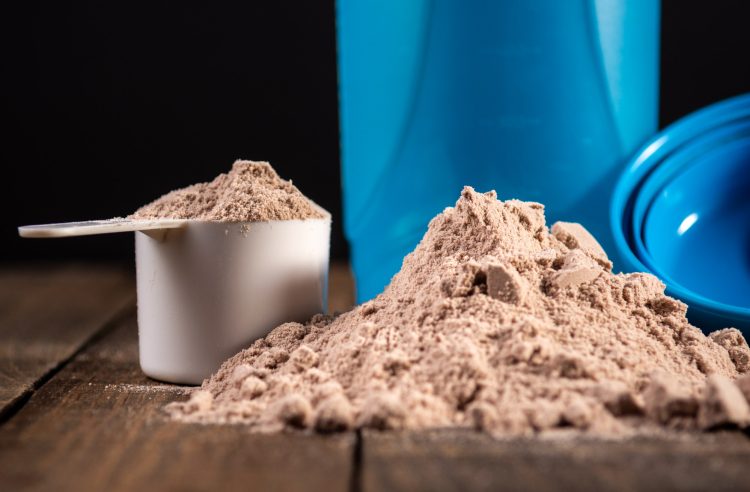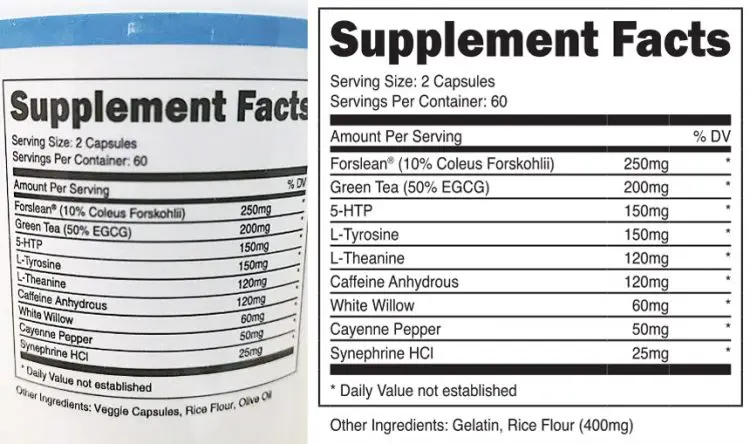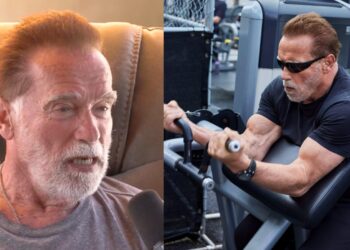Protein shakes have become as much a part of the gym landscape as dumbbells and treadmills. It’s hard to step inside a gym and not see shaker bottles whirring around you.
Tell someone you are weight training to build muscles, and they’ll probably ask if you’re chugging protein shakes, too. It’s practically a law of nature at this point. Most people think protein shakes are some magic potion that can make muscles appear with the first sip.
Although protein shakes can be incredibly effective, there are several nuances that you must consider to make the most out of them.
You might be surprised how many people secretly rely on protein shakes despite what they say in public. However, only a few have the results to show for it. As a personal trainer who assesses fitness routines to identify areas for improvement, I have noticed a pattern in the protein shakes mistakes everyone makes.
In this article, I share the most common protein shake mistakes and what you can do to avoid them and maximize your gains.
Do You Even Need a Protein Supplement?
Level Up Your Fitness: Join our 💪 strong community in Fitness Volt Newsletter. Get daily inspiration, expert-backed workouts, nutrition tips, the latest in strength sports, and the support you need to reach your goals. Subscribe for free!
Before we begin, let’s address the elephant in the room.
Most people think they don’t need a protein supplement if they can meet their daily protein target through their diet.
This is what Michael Kamalu (MD) of the Dr. Gains YouTube channel had to say on the subject:
“Protein supplementation can augment resistance training-mediated gains in skeletal muscle mass even in individuals habitually consuming ‘adequate’ protein (i.e., >0.8 g kg⁻¹ day⁻¹) through their diet.” — Michael Kamalu (1)
With this out of the way, here are the six mistakes you must stay clear of:
Mistake #1: Choosing the Wrong Protein Type
Contrary to what most people think, not all protein powders are the same.
I have been resistance training for over 16 years and have tried virtually every type of protein powder under the sun, including whey, casein, soy, vegan, concentrate, isolate, you name it, and I’ve spent my money on it.
Each protein powder has a distinctive taste, texture, and effects.
Picking the right type of protein for your goals is the first step toward better results. Let’s break down the different types of proteins to help you pick the right supplement.
Whey Protein
Whey protein is derived from milk and is the most popular type of protein supplement. This fast-digesting supplement floods the bloodstream with amino acids, making it the perfect fit to consume after a training session and kickstart the recovery process.
Whey protein comes in different forms: concentrate, isolate, and hydrolyzed. Hydrolyzed whey protein is the purest form and the fastest-absorbing.
Pro Tip: Isolate and hydrolyzed whey proteins are better suited for athletes on a strict diet who want to maintain a low body fat percentage.
Casein Protein
This type of protein is also made from milk but is much slower-digesting than whey. Casein has a much thicker texture than whey and provides your body with a steady supply of amino acids for an extended duration.
Most people prefer taking casein protein going to bed or if they are expecting a long gap between meals, as it helps prevent muscle breakdown.
Plant-Based Protein
The rise of the vegan movement gave rise to plant-based proteins. Most vegan protein supplements contain a blend of pea, rice, and hemp. These sources vary in digestion speed and amino acid profile, so you must do your own research before settling on one.
Soy Protein
Derived from soybeans, this is one of the few plant-based complete proteins, meaning it has all nine essential amino acids. It is the perfect choice for people switching to a plant-based diet.
Pro Tip: Transitioning to plant-based proteins can take some time. I recommend initially alternating between whey and vegan protein supplements until you develop a taste for the latter.
The Right Protein For Your Goal
The timing of your protein intake can also influence which powder is right for you.
- Post-Workout: Favor fast-digesting proteins like whey isolate to maximize hypertrophy after a training session.
- Overnight Recovery: Casein is a more suitable protein supp for you if you are dealing with DOMS and want a slow-release formula to aid overnight recovery and growth.
- Weight Loss: A 2021 randomized controlled trial found that plant-derived proteins may be more satiating than whey protein, making it a better choice to be consumed between meals. (2)
Try our protein calculator to discover your ideal protein intake.
Mistake #2: Not Reading the Label
No two protein supplements are created equal. Each sports nutrition company adds different ingredients to its protein supp to differentiate it from its competitors. However, these added ingredients can hurt your gains.
You must carefully read a protein powder’s nutrition label before making a purchase. Here are the things that you must look out for:
Sugar
Many companies add sugar to their protein supps to make it taste better. However, it can wreak havoc on your physique aesthetics. Excess added sugar can spike blood glucose levels and then send it crashing down, which can leave you feeling hungry and cranky.
Level Up Your Fitness: Join our 💪 strong community in Fitness Volt Newsletter. Get daily inspiration, expert-backed workouts, nutrition tips, the latest in strength sports, and the support you need to reach your goals. Subscribe for free!
Guess what most people do when they are hangry? Right, they make poor dietary choices.
Scan the protein supplement ingredient list for fructose, sucrose, dextrose, and maltodextrin. These are just sugar in disguise.
Fillers
Some companies add fillers like gums and thickeners to their products to improve their texture and quantity. However, they deliver no nutritional value and can instead hurt your overall health.
Artificial Flavors and Sweeteners
These are a hybrid of sugars and fillers. Artificial sweeteners can improve the taste of the protein supplement but can disrupt your healthy gut bacteria and negatively affect your appetite.
Too Little Protein Content
Some protein supplements contain less than 18 grams of protein per serving, which is generally not enough for lifters training for hypertrophy. Always check the label to ensure your supp delivers at least 20 grams of protein per serving.
Mistake #3: Overloading with Calories
Protein shakes have a very specific purpose for fitness enthusiasts. They are a quick protein fix for lifters to consume after a training session.
However, some people treat it like a milkshake. You can make your protein supplement taste great, but you shouldn’t add sweet treats and high-calorie syrups to it.
Here are the issues with consuming a high-calorie protein shake:
- Stalls Fat Loss: Consuming extra liquid calories (even if they are healthy) can sabotage your weight loss efforts. Your body stores excess glycogen reserves as body fat.
- Sacrifices Nutrients: Adding excess calories to your protein shake might throw off its macronutrient balance. Plus, it might also lead to micronutrient deficiencies.
- Energy Crashes: A high-sugar beverage can give you an instant energy boost. However, a crash is also around the corner. This can hamper your training performance and recovery.
Low-Calorie Shake Strategy
Here is how you can supercharge your protein shakes without overloading it with calories:
- Prioritize Lean Protein: Pick an isolate whey protein with no added sugars or fillers. Favor products with minimal ingredients.
- Add Fruits and Veggies: Frozen berries, spinach, and zucchini can add to your shake’s nutrient profile without adding excess calories.
- Use Healthy Fats: Include avocado, unsweetened nut butter, or chia seeds in your shake to make it more satiating.
- Avoid Milk: Many people add milk to their protein shakes, which can overload it with calories. Instead, favor water or unsweetened plant-based milk.
Mistake #4: Using It as a Meal Replacement
Treating whey supplements as a meal replacement is one of the biggest protein shake mistakes everyone makes.
You had a protein shake within 30 minutes of your workout? Great! But that doesn’t mean you don’t need a post-training meal. Below are reasons why treating a protein shake as a complete meal can hamper your gains:
Creates Nutrition Gaps
A balanced whole-food diet delivers a mix of macro and micronutrients that a protein powder can’t match. A whey protein shake might help you hit your protein target, but what about carbs, fats, vitamins, zinc, and iron?
Satiety Suffers
Gulping down a protein shake, regardless of how thick, is a quick fix. On the other hand, chewing real food sends fullness signals to the brain, which can limit the chances of snacking on processed foods.
It’s About Balance
Building a chiseled physique requires you to maintain a healthy balance of macro and micronutrients. It also ensures an optimal hormone balance, something 400-500 milliliters of protein shake cannot guarantee.
Protein shakes are meant to supplement your diet and not replace it. Treating a protein shake as a meal can send wrong signals to the brain, which can develop unhealthy food habits.
Mistake #5: Improper Timing
Much has been said about the right timing to consume protein. Many consider the 30-minute window immediately after a training session, known as the anabolic win, the best time to drink a protein shake.
However, recent research has shown that consuming adequate protein in combination with resistance exercise instead of protein timing is the key factor for maximizing muscle protein accretion. (3)
That said, it doesn’t mean you cannot have a protein shake at particular times during the day. Here’s how to use a protein supplement like a pro:
Pre-Workout
Drinking a protein shake (or eating a balanced meal) before a training session ensures your muscles have the raw materials they need to rebuild after the workout. Ensure that you have your shake at least 30 minutes before the workout to give it enough time to digest.
Post-Workout
You develop micro-tears in your muscle fibers after a workout. Your body is primed for nutrient absorption after a training session and a quick-absorbing whey protein isolate shake can be a godsend in the situation.
Throughout the Day
A protein shake can help you hit your daily protein goal, especially if you are having difficulty getting there on a whole-food diet. Having a high-quality protein source with each meal ensures steady muscle growth and recovery.
Mistake #6: Neglecting the Power of Whole Foods
Irrespective of how many scoops of protein powder you consume in a day, supplements don’t yield the same power as real foods for building muscle mass. A protein shake might be convenient, but it shouldn’t be the be-all and end-all of your bodybuilding regime.
Whole foods contain a healthy dose of macro and micronutrients that 20-25 grams of protein powder can’t replace. Real foods contain fiber, vitamins, minerals, and antioxidants, all of which can improve your overall health and well-being.
Incorporating Protein Shakes Into Your Fitness Routine
Are you having trouble figuring out how protein supplements can fit into your bodybuilding regime? Here is a sample bodybuilding meal plan.
- Breakfast: Three hard-boiled eggs with a side of whole-wheat toast, Greek yogurt, and orange juice
- Lunch: Grilled chicken salad, tuna on whole-wheat
- Snack: Handful of almonds and a piece of fruit
- Post-Workout: Whey protein shake
- Dinner: Grilled fish with rice and veggies
Feel free to tweak this diet plan according to your ideal TDEE and goal micro and macronutrient intake.
Conclusion
Choosing the wrong type of protein, using it as a meal replacement, improper timing, and neglecting the power of whole foods are some of the most common protein shake mistakes everyone makes. These mistakes can prevent you from smashing your fitness and bodybuilding goals and lead to a waste of money.
Protein shakes are a quick and convenient way of meeting your macronutrient goals. However, you need a structured nutrition plan to make the most of them. I recommend consulting a certified nutritionist to help you determine how a protein powder can fit into your overall diet.
If you have any questions about finding the right protein shake for you, please drop them in the comments below, and I’ll be happy to help!
References
- Churchward-Venne, T. A., Murphy, C. H., Longland, T. M., & Phillips, S. M. (2013). Role of protein and amino acids in promoting lean mass accretion with resistance exercise and attenuating lean mass loss during energy deficit in humans. Amino acids, 45(2), 231–240. https://doi.org/10.1007/s00726-013-1506-0
- Tiekou Lorinczova, H., Deb, S., Begum, G., Renshaw, D., & Zariwala, M. G. (2021). Comparative Assessment of the Acute Effects of Whey, Rice and Potato Protein Isolate Intake on Markers of Glycaemic Regulation and Appetite in Healthy Males Using a Randomised Study Design. Nutrients, 13(7), 2157. https://doi.org/10.3390/nu13072157
- Schoenfeld BJ, Aragon AA, Krieger JW. The effect of protein timing on muscle strength and hypertrophy: a meta-analysis. J Int Soc Sports Nutr. 2013;10(1):53. Published 2013 Dec 3. doi:10.1186/1550-2783-10-53













